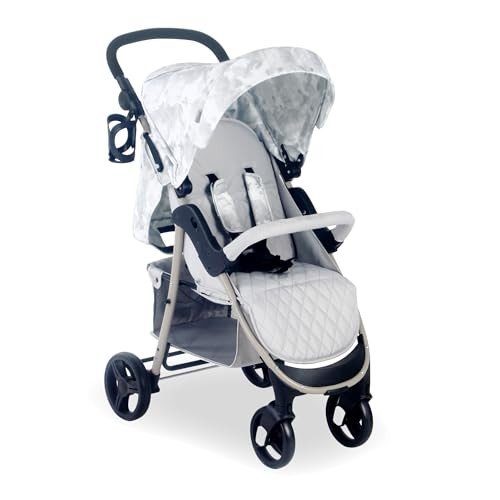Prams and Pushchairs: A Comprehensive Guide for New Parents
Browsing the world of baby transportation can be frustrating for new moms and dads, specifically when it comes to selecting between prams and pushchairs. Each alternative offers unique benefits and limitations, indicating that making a notified decision is crucial. This short article intends to supply a comprehensive understanding of prams and pushchairs, their differences, features to consider, and ideas for choosing the best one.
Understanding the Basics: Prams vs. Pushchairs
Prams and pushchairs are terms often utilized interchangeably, but they refer to different types of baby transportation systems.
Meanings:
- Prams: Traditionally developed for newborns and babies, prams have a large, completely flat bassinet that enables ideal convenience and safety during early stages of a child's life.
- Pushchairs: Designed for older babies and young children, pushchairs typically have an upright seat that is ideal for children who can support their head and neck. Stroller Pushchair UK come with adjustable recline alternatives.
Key Differences
| Function | Pram | Pushchair |
|---|---|---|
| Style | Flat bassinet | Upright seat |
| Age Suitability | Newborn to around 6 months | 6 months to 4 years |
| Portability | Generally heavier, less foldable | Frequently light-weight and foldable |
| Convenience | Cozy for newborns, snug fit | Adjustable, can be reclined |
| Usage | Suitable for walks and leisure | Versatile for everyday activities and travel |
Functions to Consider When Choosing Prams and Pushchairs
Security Features
- Harness systems (5-point vs. 3-point)
- Braking systems (foot-operated vs. hand-operated)
- Stability and toughness of the frame
Weight and Portability
- Consider the weight of the pram or pushchair
- Search for a model that folds easily for transportation
Size and Storage
- Inspect measurements for fitting through doorways and in automobile trunks
- Look for extra storage choices like baskets or pockets
Convenience
- Cushioned seats and adjustable recline positions
- Suspension systems for smoother rides on rough surfaces
Weather Protection
- UV defense in sunshades
- Choices for rain covers and windshields
Wheels and Maneuverability
- Wheel size and type (fixed vs. swivel)
- Suspension systems that aid handling and comfort
Durability
- Designs that transform from pram to pushchair
- Stronger frames that can accommodate growing kids
Popular Types of Prams and Pushchairs
When considering prams and pushchairs, parents often find various styles catering to particular needs. Here are some popular types:
1. Requirement Prams/Pushchairs
These are good all-rounders, designed for daily usage with a strong frame and adequate storage space. They are typically adjustable and can deal with different surfaces.
2. Travel Systems
These consist of a safety seat and a stroller that can be utilized together, making it simple to move the baby from the car to the pram without waking them up.
3. Umbrella Strollers
These are lightweight and foldable, perfect for fast outings and travel. While hassle-free, they often do not have some of the security and convenience functions found in heavier designs.
4. All-Terrain Strollers
Created for off-road experiences, these strollers have larger wheels and a more rugged frame, making them perfect for active families.
Picking the Right Pram or Pushchair
When selecting the best pram or pushchair, moms and dads ought to take the following steps:
- Assess Lifestyle Needs: Consider how you will utilize the pram or pushchair (daily walks, travel, irregular terrain) and choose appropriately.
- Test Drive: It's useful to physically check the designs at the shop, looking for managing, comfort, and weight.
- Research Brands: Look at reviews and recommendations from other moms and dads about specific brands or models.
- Think About Future Needs: Think ahead to guarantee the option will work as the kid grows. Convertible designs use flexibility.
- Spending plan: Set a budget plan but likewise consider quality and longevity. In some cases investing more initially can conserve costs in the long run.
Frequently Asked Questions
What is the very best age to start using a pushchair?
A lot of pushchairs can be used for babies from about 6 months old when they can sufficiently support their heads and necks. Make sure to inspect the producer's specs.
Are prams appropriate for newborns?
Yes, prams are ideally matched for newborns due to their flat bassinet style, offering a comfy and safe environment.
How do I clean a pram or pushchair?
Constantly describe the manufacturer's guidelines, but the majority of covers are detachable and can be washed. Clean down the frame with a moist fabric and avoid utilizing harsh chemicals.
Can I utilize a pram or pushchair on public transport?
Different models vary in size; lightweight and foldable alternatives are usually preferable for buses or trains. Nevertheless, constantly look for transportation policies in your location.
The length of time can I utilize a pram or pushchair?
It typically depends upon the weight limit specified by the manufacturer, often between 15-50 pounds, or till your child no longer wants to be pushed.
Choosing between a pram and a pushchair is a considerable decision that deals with the way of life and needs of both the parent and the child. By understanding Prams Online UK between the two, evaluating vital features, and choosing the right design, parents can guarantee they have a safe, comfortable, and useful transport service for their children.
Equipping oneself with knowledge supplies parents not just peace of mind however likewise the self-confidence to make the very best option for their kid's early adventure into the world. Various way of lives require various solutions, so taking the time to research study and test what fits can alleviate a few of the tensions that come with new parenthood. Delighted walking!

